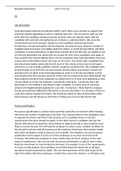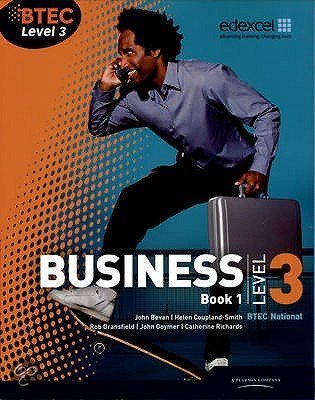Benjamin Richardson unit 13- D1, D2
D1
Job Description
A job description helps the recruitment staff to see if there is any training or support that
would be needed depending on which candidate they hire. The recruitment staff can see
what skills the candidate already possesses and then they can identify which skills the
candidate will need extra strengthening on. As there is a job description, this saves the
recruitment team from having to explain to each candidate what the job entails.
Furthermore, the job description will also help the recruitment team, keep the number of
ineligible applicants lower and eligible applicants higher. A useful job description will allow
candidates to assess themselves to determine whether they feel like they are eligible or not
as if the job description has duties that are missed off, then more candidates may apply as
they would fit the criteria without them. The first weakness that a job description may have
is that some of the duties may be very easy or very brief. This means that a candidate may
see the job description and decide they fit most of the criteria so they may as well apply
when they are not actually qualified. Another weakness would be that, the candidates who
do get through to an interview can look and the job description and prepare answers for
questions that are likely to be asked depending on what is on the job description so they
sound better than they actually would be if they had not prepared answers beforehand. The
final weakness would be that candidates can adjust their CV to look more appealing as they
can put things on it that the employer is specifically looking for. I would say that a job
description is very helpful in selecting the right candidate, as it does stop an excessive
amount of ineligible people applying for a job role. To improve, I think that the company
should put important additional information on the job description. For example, if there is
a job that requires frequent overtime, this should be stated on the job description rather
than having to ask this during an interview or finding out once you get into the job.
Person specification
The person specification is another document that assists the recruitment staff in helping
thin down the number of applications received. This communicates to the candidates what
is required from them and what is also desired, so if a candidate doesn’t meet the
requirements then they should not apply, on the other hand if a candidate also has the
desired skills then they should be more inclined to apply to the job as they would be more
likely to receive the job. This will help the employer to select a more suitable candidate for
the job which will also help the business as the employee should also then perform better
than other candidates would as they are more suitable. The employer can use the person
specification and compare it to the CV of the employees to see how much they both
correlate. This allows the employer to have a better idea of who to progress to the next
stage of employment. The next way that the person specification is useful is that is helps
keep the interviewer on track during the interview. For example, if one of the requirements
is 3 years in data analysis, then questions around this should be asked and no off-topic
questions should necessarily be asked. This way the interviewer will be able to get all the
right information about the employee, so when they review the answers, no off-topic notes





